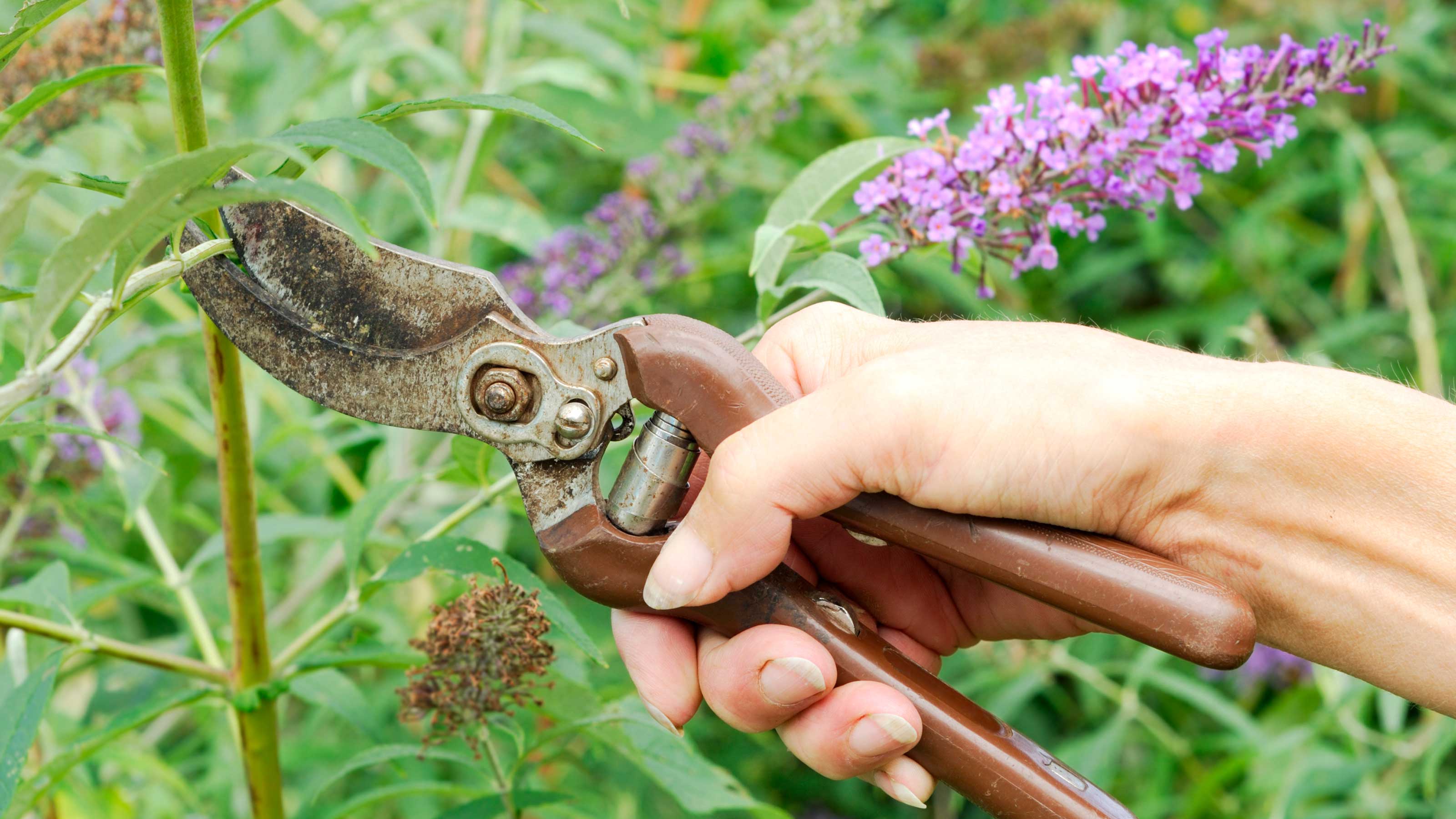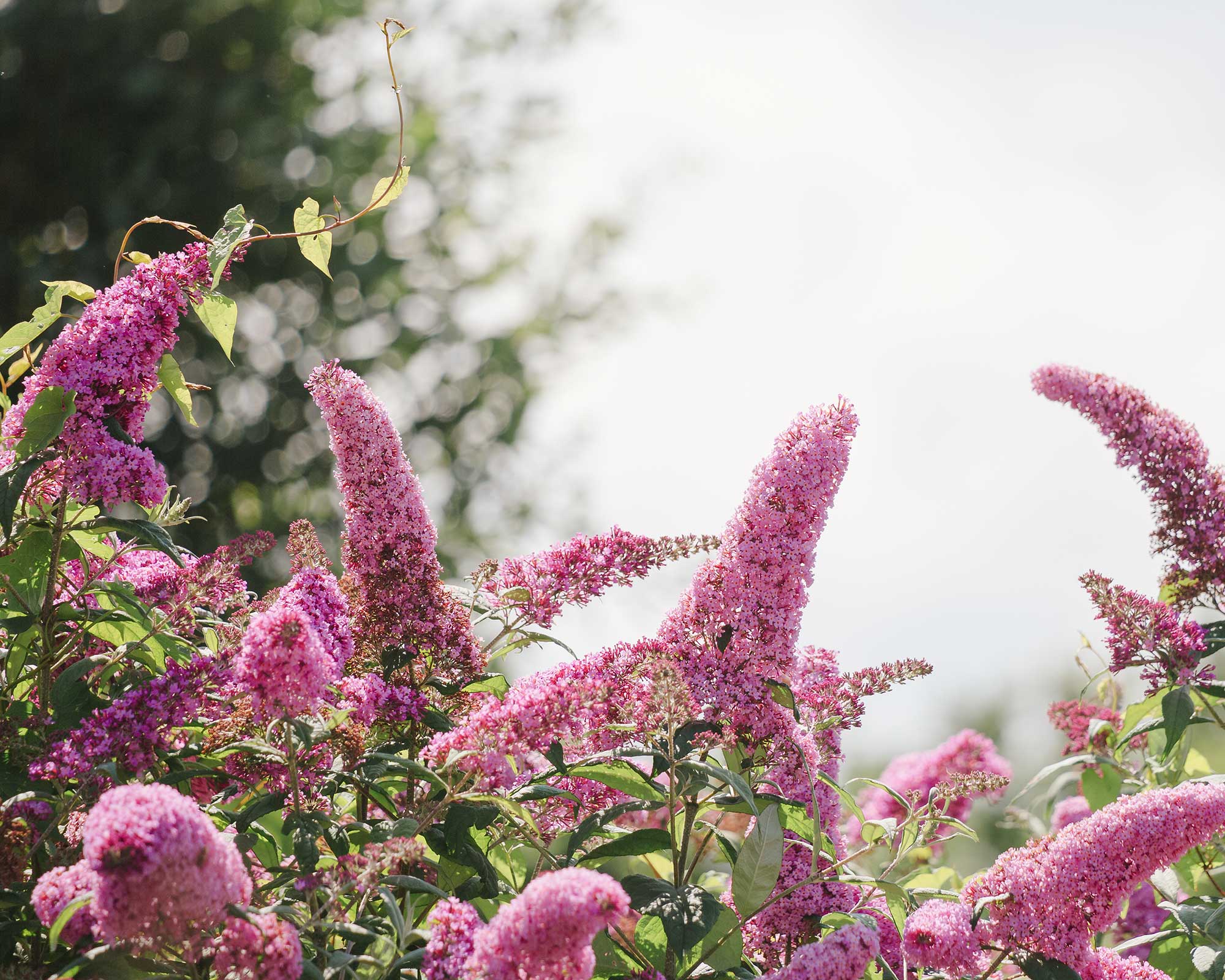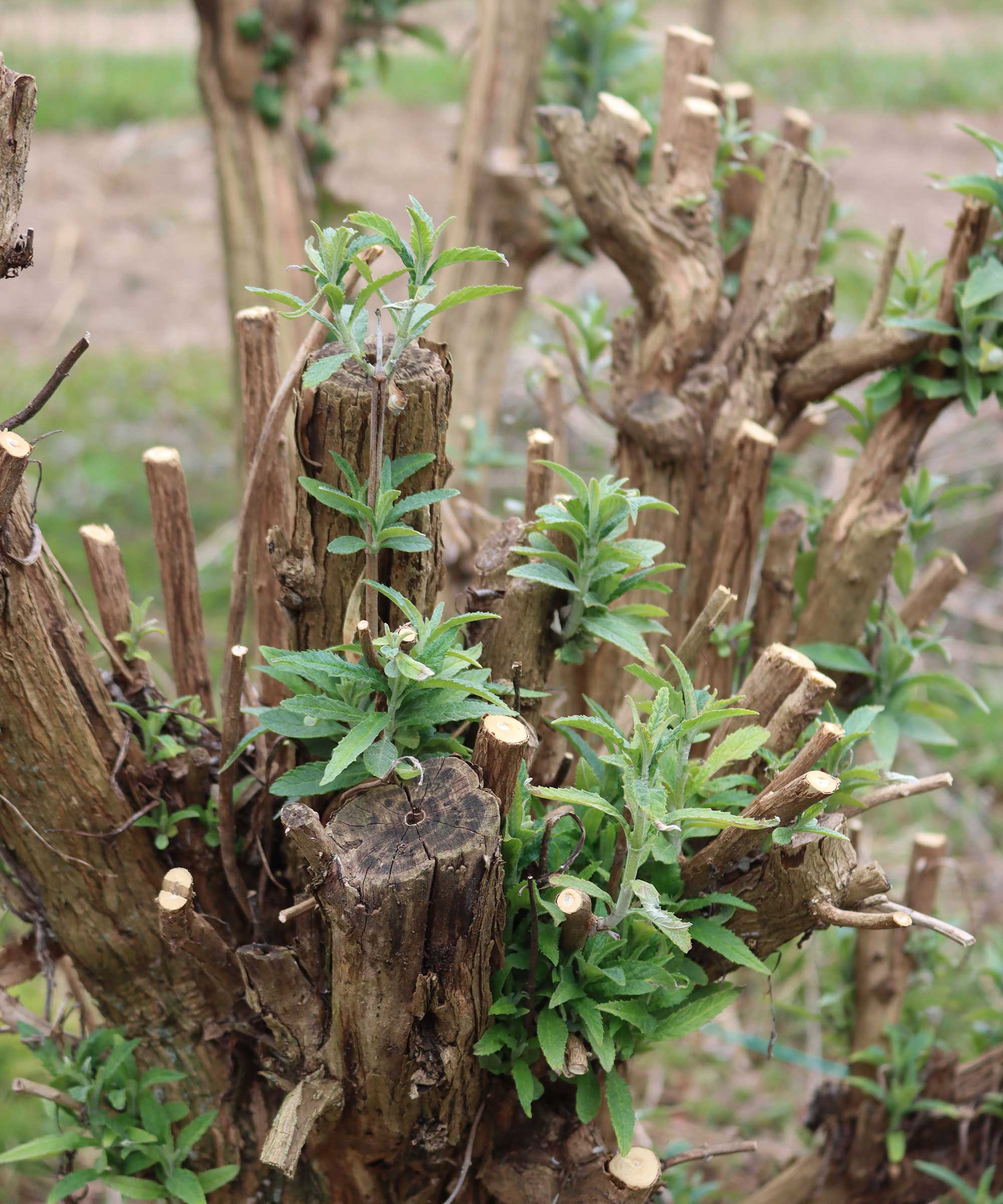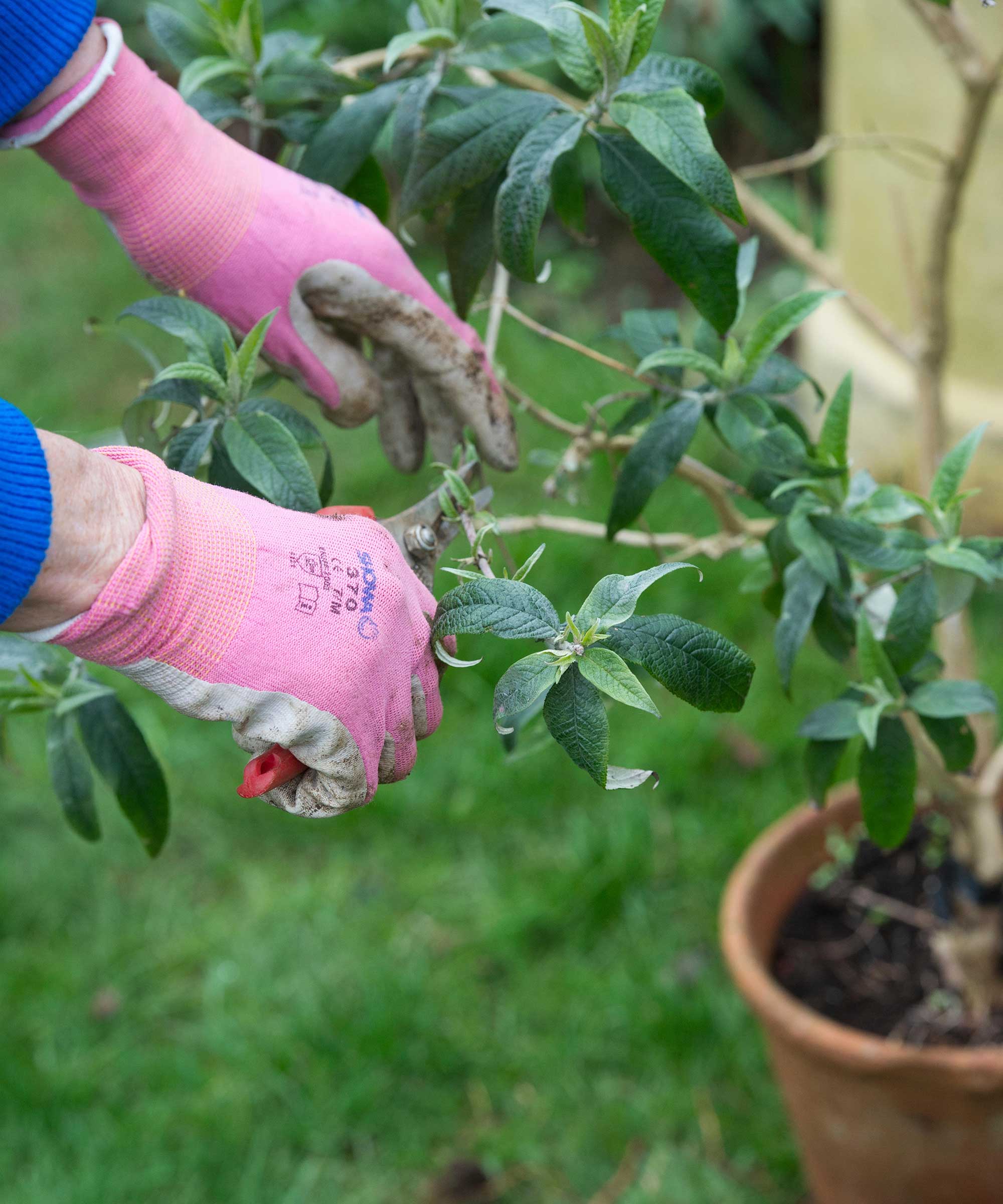Pruning buddleja: tips to get your bee-friendly shrub in order
Our advice on pruning buddleja will help you encourage beautiful blooms and strong growth for your butterfly bush


Pruning buddleja annually is key for plenty of flowers, strong growth, and a tidier shape on your shrub come summer. And it's super simple to do.
Buddlejas are a joy to grow and one of the best bee-friendly plants for your garden. They're great for butterflies, too, and once established, are drought-tolerant. In fact, we'd say that planting a buddleja is a wonderful pick if you're looking to create an eco-friendly plot.
Pruning buddleja really isn't very difficult, but there are a couple of things to bear in mind that will make a dramatic difference to how well your plant performs and how many blooms it produces. We've brought together top gardening expert tips to help you get the best results.

Pruning buddlejas will encourage them to flower prolifically
Pruning buddleja in 3 easy steps
John Negus, expert gardener from Amateur Gardening, shares his step-by-step advice for pruning buddlejas:
- Grab your best secateurs, ensuring they are sharp and clean. Then, all the flowered shoots should be cut back to within 4in (10m) of the main framework – a process known as ‘stooling’, explains John. Make the cuts just above a stem joint where possible.
- 'If your shrub is really out of control, keep it in check by shortening intrusive shoots by half – they will produce new flowering growth,' he says.
- 'Follow pruning by feeding monthly, until early autumn,' John continues. Miracle-Gro Rose & Shrub Plant food, or a similar brand, will do the job well.

Buddlejas can handle a hard prune
When is the best time to prune buddleja?
According to John, the best time for pruning buddleja is in early spring, when temperatures are rising and buds are swelling – so one to add to your list of spring garden jobs this year. Pruning at this time will give you up to 9.4ft (3m) of new growth and splendid blooms from mid summer onwards.
However, for anyone who would like to see late-summer butterflies such as the small tortoiseshell, prune your buddleja in late spring instead of early spring. This will shift the flowering into late summer and early autumn – buddlejas are tough and will often continue flowering well into early and even mid fall in milder climates.
If you have multiple buddlejas in your garden, you can prune one or two later to help pollinators throughout the summer. This is a handy tip to bear in mind if you're learning how to grow a butterfly garden, or are simply looking for more wildlife garden ideas for your outdoor space.
In fact, the British Trust for Ornithology advises that 'it is possible to produce a succession of flowering across several plants by pruning one in mid winter, one in late winter, one in early spring, and one in mid spring.'
However, there are a couple of varieties you shouldn't hard prune in early spring, or you'll see no flowers at all this year. These include B. alternifolia and B. colvilei. They bloom on stems made in the previous season, so cutting them back in spring would remove the flower buds. Instead, prune them after flowering, in early to mid-summer.

These flowering shrubs are a magnet for butterflies
Should dwarf buddleja be hard pruned?
Smaller versions of these flowering shrubs are perfect for petite plots, or even for growing in large planters as part of your container gardening display. And you don't need to switch up the approach when it comes to pruning buddleja of this variety, so it's just as simple to keep them in check.
'Dwarf buddleja are pruned exactly like their larger cousins,' says Christine Walkden, garden expert for Amateur Gardening. 'Shorten last year's flowered shoots to within 4in (10cm) of the main framework, and cut back any stems that are detracting from its symmetry.'
Then, in mid spring when the soil is a little warmer, feed the shrubs with a balanced fertilizer, such as Vitax Q4 or fish, blood and bone meal, and mulch with well-rotted organic matter.
'Repeat these applications monthly until early fall,' says John. 'After flowering, encourage a second flush of blooms by removing faded blossom with 6in (15cm) of stem.'

Potted buddlejas should be pruned in the same way as the usual kinds

The garden was always a big part of Holly's life growing up, as was the surrounding New Forest where she lived. Her appreciation for the great outdoors has only grown since then. She's been an allotment keeper, a professional gardener, and a botanical illustrator – plants are her passion.
